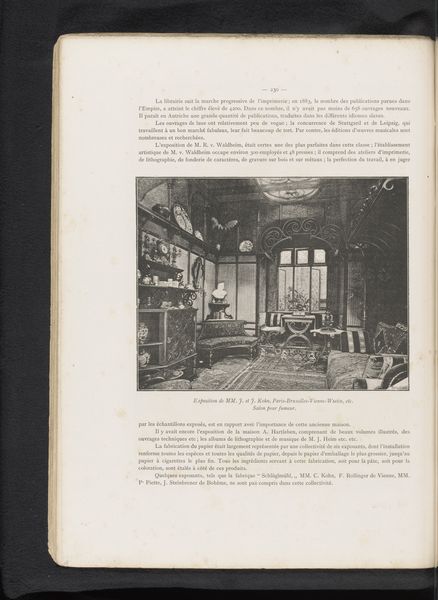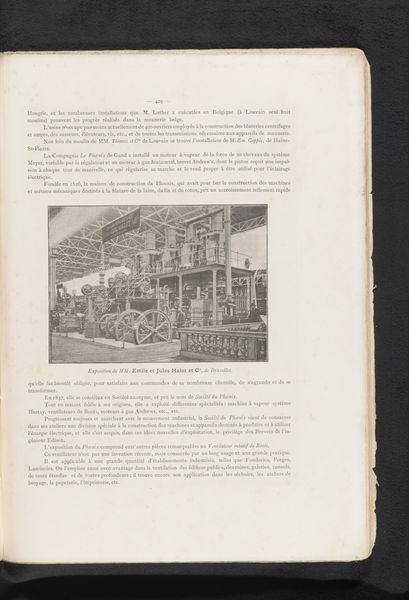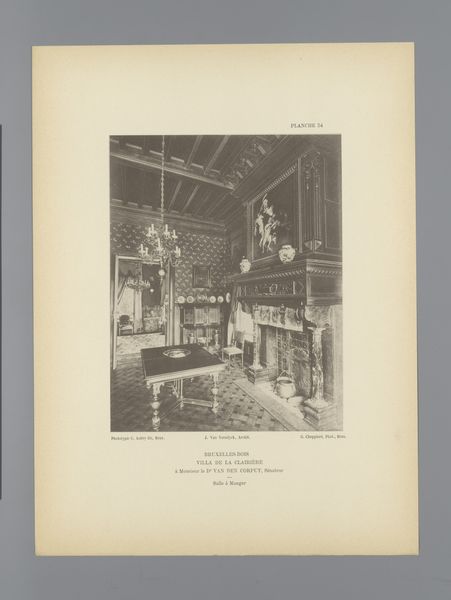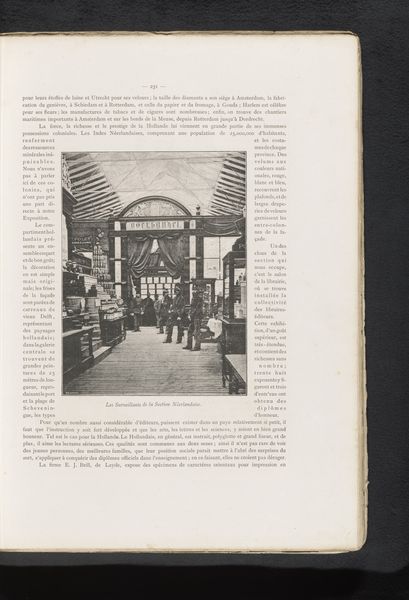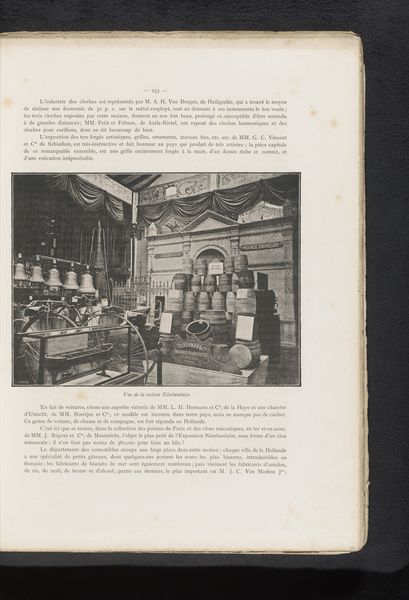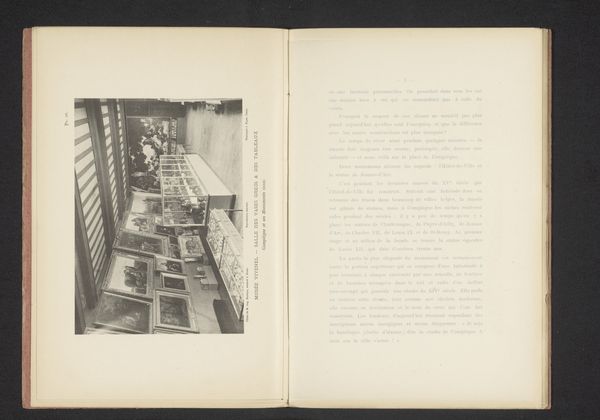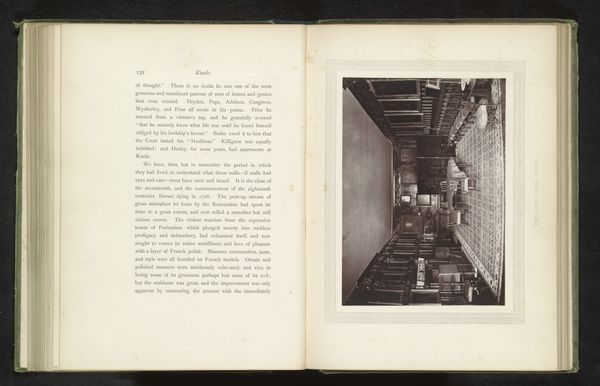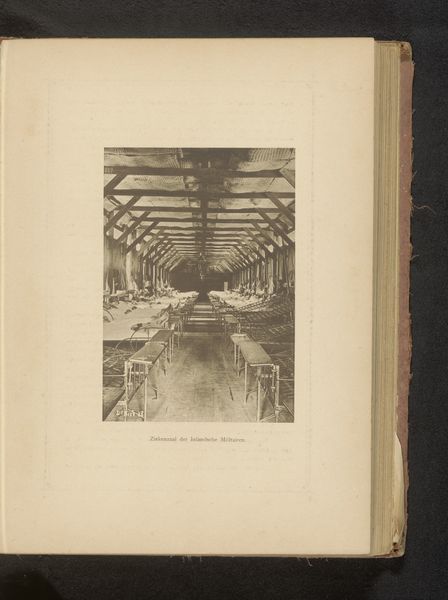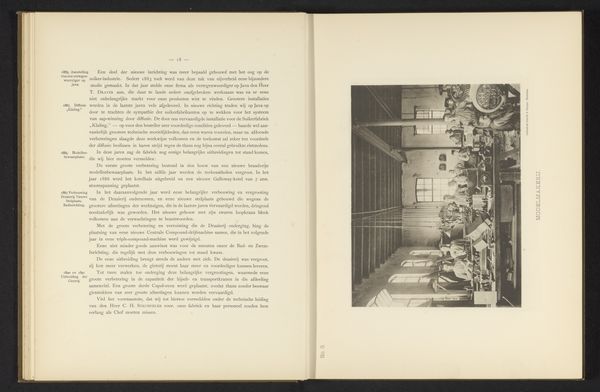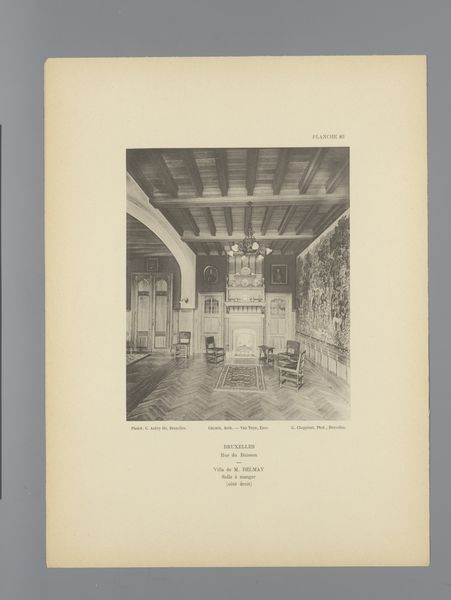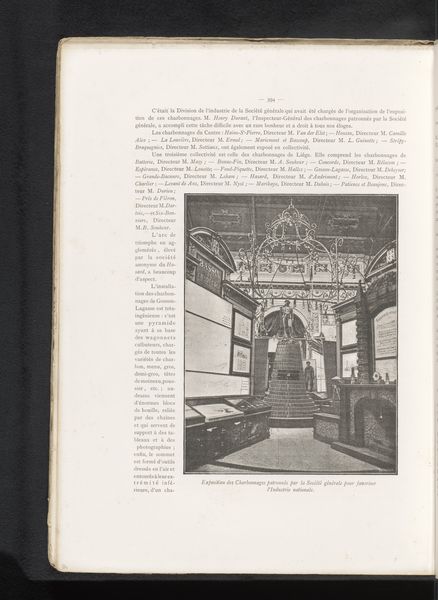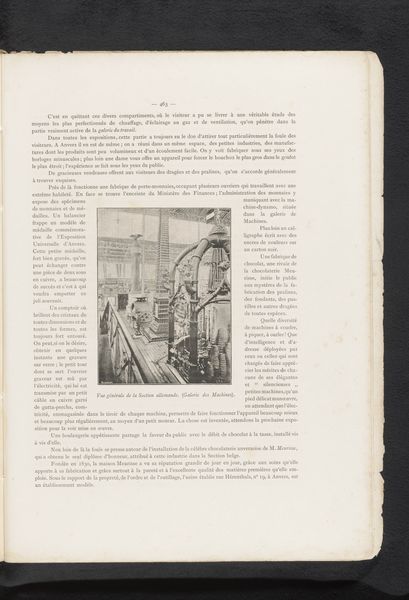
Gezicht op het Servische deel van de Wereldtentoonstelling van 1885 in Antwerpen before 1885
0:00
0:00
print, photography, engraving
# print
#
photography
#
orientalism
#
cityscape
#
engraving
Dimensions: height 171 mm, width 226 mm
Copyright: Rijks Museum: Open Domain
Editor: So, here we have a photographic engraving from before 1885, titled "Gezicht op het Servische deel van de Wereldtentoonstelling van 1885 in Antwerpen"— "View of the Serbian section of the World Fair in Antwerp". I am immediately struck by how ornate it is. The space is just packed with objects. What story does this photograph tell? Curator: It presents a moment of intense cultural exchange, viewed through a lens of...let's say, curated identity. Consider the Serbian artifacts and how they were strategically presented at this World Fair. Think about the cultural memory that Serbia was crafting through the chosen objects: furniture, textiles, what looks like locally distilled liquors. Editor: So it's not just about the objects themselves, but also what they represented to Serbia at the time. Curator: Exactly! The architecture of the exhibit itself, do you notice how it is neither purely Serbian nor reflective of the host country, Belgium? It hints at Orientalist fascination, feeding into Western European perceptions of the Balkans. Look closer, and ask: What narratives are being constructed? Editor: You are right! Now that you point it out, this doesn’t strike me as an entirely objective representation. I see these carefully chosen objects positioned to convey a very specific idea of Serbian identity to an international audience. It feels like a performance. Curator: A performance indeed! And performances reveal underlying power dynamics. What lasting impact might such curated displays have had on Serbia's image abroad? Editor: So this image really captures a moment of cultural negotiation. The objects carry cultural significance, both for those displaying them and those viewing them. I’m now really thinking about how that negotiation affected Serbia. Curator: Indeed. Cultural identity is, after all, in the eye of the beholder, or in this case, the consumer.
Comments
No comments
Be the first to comment and join the conversation on the ultimate creative platform.
